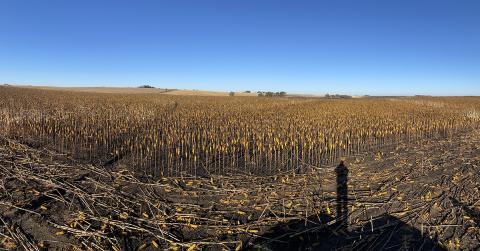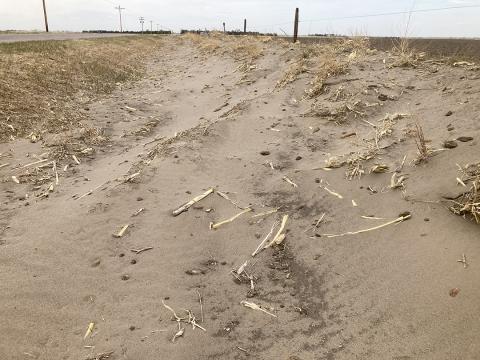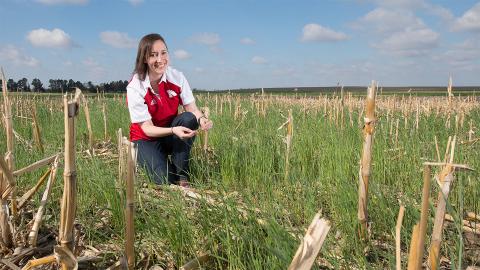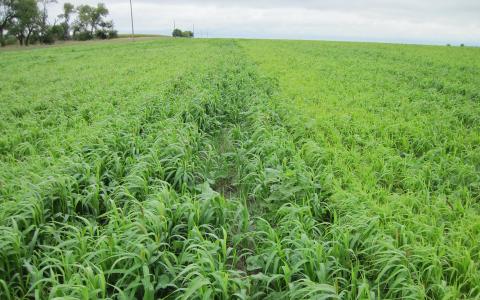Ameyaw to Test Alley Cropping Farming with USDA Grant
November 20, 2024
This research aims to demonstrate how integrating rows of trees into crop fields can maximize yields, improve drought tolerance and mitigate wildfire risks, and assist farmers with adopting this underutilized practice.
Everything on EQIP for Producers
August 8, 2024
In this series of UNL Water articles, producers can brush up on EQIP eligibility and application requirements to receive assistance with natural resource concerns on their land.

Turk Investigating Soil Health Over Time, a Key to Climate Resilience Strategies
June 6, 2024
Turk’s research will inform soil carbon sequestration strategies and advance understanding of soil health, which is key to agricultural systems’ capacity to withstand extreme weather.
Crop Residue Removal: Its Effect on Soil and Water Quality
December 15, 2022
As crop residues provide numerous benefits for soil health and water availability, crop growers should weigh the pros and cons of leaving crop residue in the field — particularly those who farm dryland ground.
FAQ for Fire Damage to Unharvested Crops and Harvested Ground
October 23, 2024
Nebraska Extension recommendations for crops impacted by fire damage, highlighting grain and feed options for unharvested corn, what to expect of soil nutrient loss and techniques to avoid soil erosion.
Using Emergency Tillage to Control Wind Erosion
April 21, 2022
Although soil erosion is best handled with a long-range plan that includes maintaining vegetative ground cover, reducing tillage, reducing field widths, and planting wind breaks, when soil starts moving unexpectedly — or conditions suggest this may occur — emergency control strategies are needed.
Which Farming Practices Help Soils Absorb Heavy Rains?
October 3, 2019
A synthesis of 89 studies across six continents has helped clarify which agricultural practices hold water when it comes to helping soils soak up precipitation — a factor critical to mitigating floods, outlasting drought and stabilizing crop yields.
Funds Available to Plant Severely Weather-Damaged Acres to Cover Crops
April 17, 2019
To help manage cropland damaged by Nebraska’s severe spring weather, NRCS is providing funds to plant cover crops on cropland acres. Cover crops prevent erosion, improve soil’s physical and biological properties, supply nutrients, and suppress weeds.






